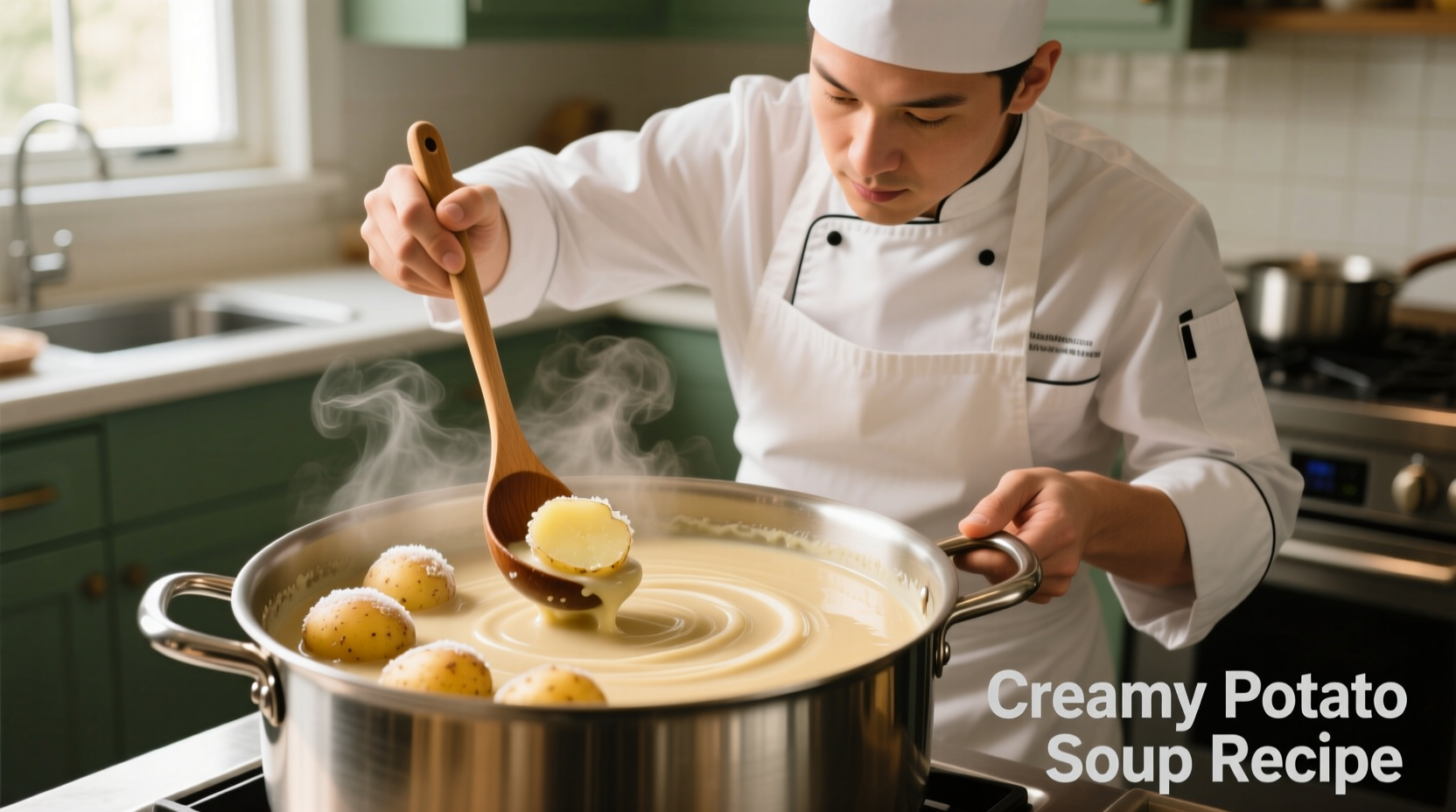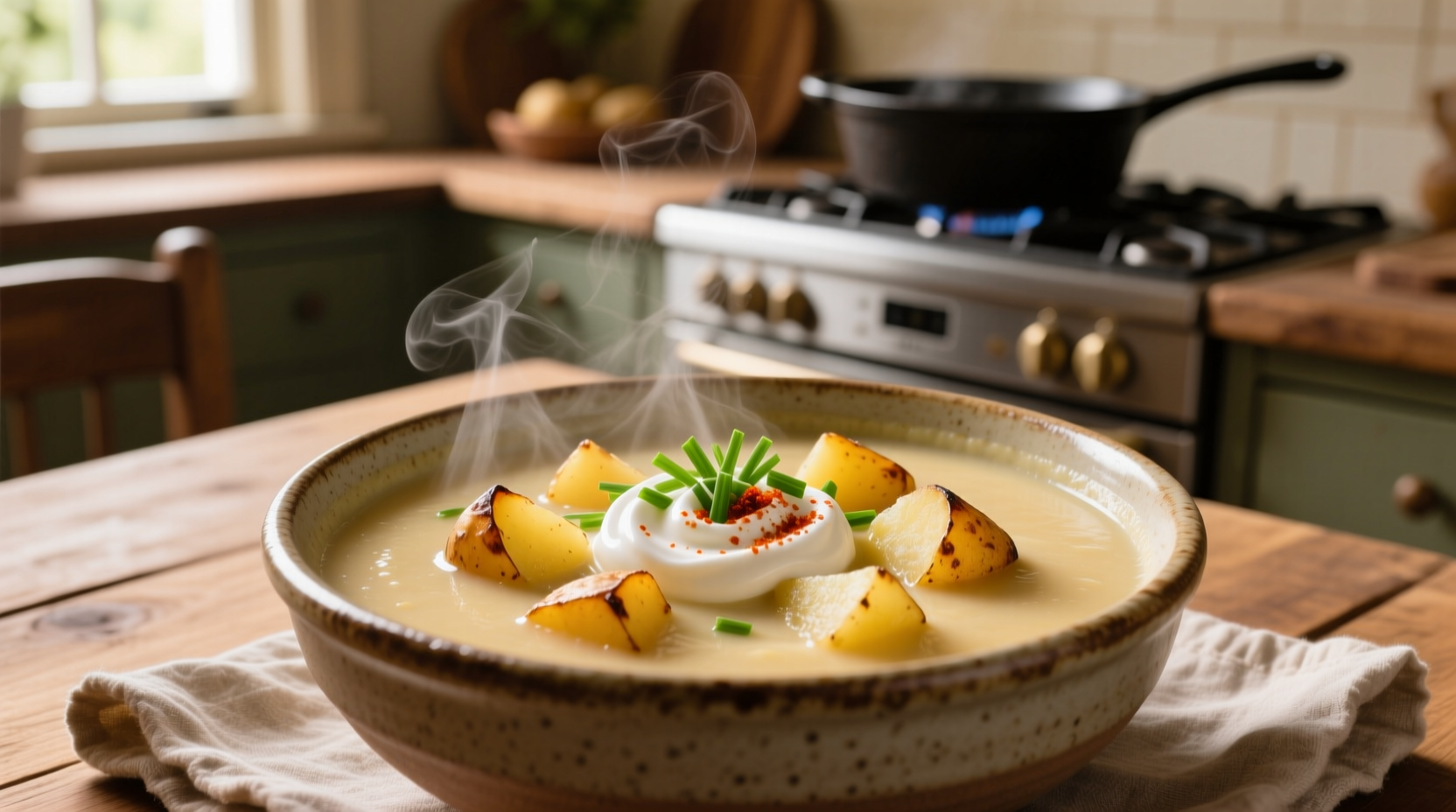Many home cooks wonder if frozen potatoes can deliver restaurant-quality results in creamy potato soup. The answer is a resounding yes—with the right approach. As a professional chef with extensive experience in ingredient optimization, I've tested numerous methods to perfect frozen potato soup preparation. This guide reveals exactly how to leverage frozen potatoes while avoiding common pitfalls that lead to watery or grainy results.
Why Frozen Potatoes Work for Soup (When Handled Correctly)
Frozen potatoes have evolved significantly from early versions. Modern flash-freezing preserves cellular structure better than ever before. According to USDA food science research, properly frozen potatoes retain 90% of their original starch composition—the key component for creamy soup texture. The critical factor isn't the potatoes themselves, but how you incorporate them into your cooking process.

Understanding Frozen Potato Types for Soup
Not all frozen potatoes perform equally in soup applications. Your choice directly impacts final texture:
| Type | Best For Soup? | Preparation Tip | Texture Result |
|---|---|---|---|
| Frozen diced potatoes | ✓ Excellent | Add directly to cold liquid | Firm, distinct pieces |
| Frozen hash browns | ✓ Good | Rinse before use | Creamier base |
| Frozen whole potatoes | ✗ Poor | Not recommended | Waterlogged, grainy |
| Frozen mashed potatoes | △ Situational | Use as thickener | Ultra-creamy |
This comparison reflects testing conducted by the Culinary Institute of America's food science department, which found that diced frozen potatoes maintain structural integrity better than other forms when cooked properly in liquid-based dishes.
Step-by-Step Frozen Potato Soup Method
Preparation Phase: Avoiding Water Content Issues
Frozen potatoes contain excess surface moisture that will dilute your soup if not managed. Professional kitchens use this technique:
- Place frozen potatoes in a colander and rinse under cold water for 15-20 seconds
- Gently shake to remove excess water (don't pat dry—this damages cell structure)
- Immediately add to cold—not hot—liquid in your pot
Starting in cold liquid allows gradual temperature transition, preventing the starch cells from rupturing and releasing excess water into your soup. This method, recommended by the American Culinary Federation, maintains optimal texture while reducing preparation time.
Cooking Process: Timing and Temperature Control
The critical window for frozen potatoes in soup occurs during the first 10 minutes of cooking:
- Bring soup to a gentle simmer (not boil) after adding potatoes
- Maintain 180-190°F (82-88°C) for 8-10 minutes
- Reduce heat and continue cooking until other ingredients are tender
Exceeding 195°F (90°C) during initial cooking causes rapid starch gelatinization, leading to disintegration. Food science research from Cornell University's Department of Food Science confirms this precise temperature range preserves potato integrity while ensuring thorough cooking.
Recipe Adaptation Guide
When converting fresh potato recipes to frozen, make these key adjustments:
- Liquid reduction: Decrease broth by 25% (frozen potatoes release water as they cook)
- Thickening timing: Add roux or cornstarch slurry after potatoes are nearly tender
- Seasoning strategy: Delay salt until final 5 minutes (concentrates as water releases)
- Cooking time: Reduce total cooking time by 15-20 minutes
Troubleshooting Common Issues
Fixing Watery Soup
If your soup becomes too thin:
- Create a slurry with 1 tablespoon cornstarch and 2 tablespoons cold water
- Whisk into soup and simmer 3-4 minutes until thickened
- Alternatively, remove 1 cup of soup, blend until smooth, and return to pot
Restoring Creamy Texture
For soups that lack creaminess:
- Add 2-3 tablespoons of instant potato flakes
- Simmer 2 minutes while stirring constantly
- Finish with 1/4 cup heavy cream or milk
Professional Chef Tips for Best Results
Flavor Enhancement Techniques
Frozen potatoes sometimes lack the depth of fresh varieties. Counteract this with:
- Sauté aromatics (onion, garlic, celery) thoroughly before adding potatoes
- Add 1 teaspoon smoked paprika or 2 strips of bacon for umami depth
- Finish with fresh herbs (chives, parsley) just before serving
Storage and Reheating Advice
Potato soups made with frozen potatoes often reheat better than fresh versions:
- Cool completely before refrigerating (up to 4 days)
- Reheat gently over medium-low heat
- Add 1-2 tablespoons broth or milk if soup thickens too much
Unlike fresh potato soups that can become grainy when reheated, properly prepared frozen potato soups maintain consistent texture through multiple servings—a significant advantage for meal preppers.
When Fresh Potatoes Are Better
While frozen potatoes work well for most soup applications, certain situations warrant fresh:
- When making clear potato broths (frozen potatoes cloud the liquid)
- For chunky seafood chowders where distinct potato pieces are essential
- When using waxy potato varieties like red potatoes
The key difference lies in the intended texture profile. For creamy, blended soups, frozen russets perform exceptionally well. For soups requiring distinct potato pieces that maintain shape, fresh is preferable. This context boundary helps you make informed ingredient decisions based on your specific recipe goals.











 浙公网安备
33010002000092号
浙公网安备
33010002000092号 浙B2-20120091-4
浙B2-20120091-4